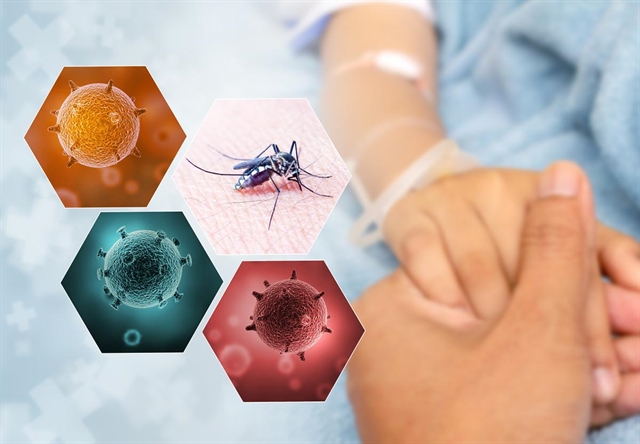 Life & Style
Life & Style


|
| Dr Mattias Larsson. Photo courtesy of Family Medical Practice |
Dr Mattias Larsson*
Some weeks ago, a mother and father with two children came into the clinic with sudden onset of fever. The mother had a fever first and then the children and father developed it later. Why would everyone in one household develop a fever at the same time?
Fever typically develops when the body detects the presence of harmful microorganisms like bacteria or viruses. The goal is to inhibit their replication and growth, as many microorganisms thrive within a narrow temperature range. Higher body temperature also increases the metabolic rate of the body and stimulates the immune system, activating and enhancing the production of white blood cells and antibodies.
So most likely a microorganism has been transmitted within the family. How does an organism transmit? Epidemiology – assessing the connection between disease symptoms and environmental factors – can answer that. This is the detective work of physicians.
The most common cause of fever – respiratory infections – is transmitted through droplets or airborne pathogens – when we are sneezing and coughing, we spread the virus or bacteria. The family members did have rapid breathing but tested negative for Influenza A&B and COVID. Listening to the lungs with a stethoscope did not indicate bronchitis or pneumonia.
Another route of spreading disease is faecal-oral transmission, for example through contaminated food. This could easily spread in a family. They had abdominal pain and had been vomiting. Viruses cause fever, vomiting and diarrhoea whereas bacteria cause mostly fever, abdominal pain, diarrhoea and possibly blood in the stool.

|
| Dengue cases vary in severity from mild to fatal. Photo shutterstock.com |
There are also vector-transmitted diseases – a vector is another organism - for example, an insect, that transmits a disease. They mentioned some annoying mosquitos in their house. Mosquitoes, although small, are the most dangerous animal in the world causing most diseases and deaths globally - more than sharks and tigers (that cause very few).
Many diseases use mosquitoes as carriers: malaria, zika, chikungunya and yellow fever account for four to five hundred thousand fatalities each year. But in Hà Nội, there’s a more common disease carried by mosquitoes, namely Dengue. All the family members tested positive for dengue.
Clinically, dengue cases vary in severity from mild to fatal. The family gradually developed more symptoms, including severe headaches, muscle and joint pain, nausea, rash, bleeding gums, and nosebleeds. In severe dengue, hemorrhagic fever or dengue shock syndrome may develop, often when the fever subsides.
For our family, one of the children was admitted due to decreasing platelets with nose and gum bleeding, as well as fatigue. The next day the other child had a similar experience. There’s no specific antiviral treatment for dengue. It is important to follow up every day with a full blood count as platelets tend to decrease. They received paracetamol to control the fever and body aches. The most critical phase is when the fever decreases and then the dengue shock syndrome might develop fast. As the platelets decreased the children developed tiny bleeding spots on the skin called petechiae, as well as an itchy rash over the body. They received IV fluid replacement until they could drink enough water by themselves. By monitoring the progress and seeing that they had had enough fluid replacement the worst symptoms were prevented.
While dengue can cause severe illness, including dengue hemorrhagic fever and dengue shock syndrome, Việt Nam has been successful in controlling dengue fever mortality. Since 2005, mortality has been less than one per thousand cases.
Dengvaxia by Sanofi Pasteur is the first available dengue vaccine against all four strains of dengue virus. It can only be used if a prior dengue infection can be verified, as a second infection can be more severe, and is approved from the age of six years in several dengue-endemic countries, however not yet in Việt Nam. As our family members had verified dengue they are eligible for the vaccine (when approved in Việt Nam) which may protect them from an even more severe second dengue infection. Family Medical Practice
*Dr Mattias Larsson is a pediatric doctor at Family Medical Practice and associate professor at Karolinska Institutet and has extensive experience in research on infectious diseases. He has worked with the Oxford University Clinical Research Unit and the Ministry of Health of Việt Nam. He is fluent in English, Swedish, Vietnamese, German and some Spanish.
Visit Family Medical Practice Hanoi 24/7 at 298I P. Kim Mã, Kim Mã Ward, Ba Đình District.
To book an appointment, please call us at (024).3843.0784 or via Whatsapp, Viber or Zalo on +84.944.43.1919 or email hanoi@vietnammedicalpractice.com.
FMP’s downtown location in Hồ Chí Minh City is in Diamond Plaza, 34Đ Lê Duẩn Street, Bến Nghé, District 1, and 95Đ Thảo Điền, District 2. Tel. (028) 3822 7848 or email hcmc@vietnammedicalpractice.com.




